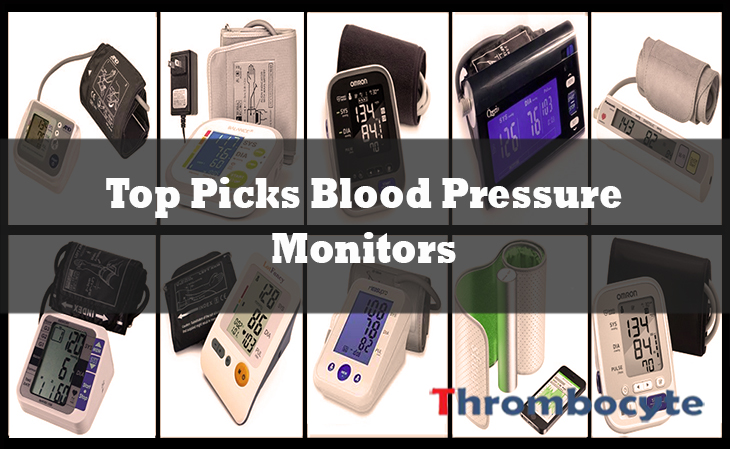When a person is physically injured, the external layer of the involved skin is usually torn apart, causing it to bleed. In order to stop the bleeding, a number of proteins and other different blood particles start to work together in forming a blood clot with the common purpose of stopping blood loss. The process, colloquially referred to as blood clotting, is medically known as coagulation.
Blood coagulation is one of the most important body mechanisms to naturally achieve fast and successful healing in response to injury as it stops blood loss in the affected area. However, the process is supposed to normally occur only when needed. This means that blood clotting should only happen when there is an actual physical injury to blood vessels.
When the blood displays the activation of clotting processes despite the natural flow of blood being unimpaired with the presence of vascular injury, the process is known as hypercoagulable state or thrombophilia.
If these abnormal clotting conditions are identified in time and treated properly, they may not be dangerous to your health in general. Nonetheless, clot formation inside a blood vessel, also known as thrombus or an embolus, can still be harmful for they can cause serious complications. Read about causes of blood clots.
Most cases of blood clotting disorders are usually genetic in nature. This suggests that the predecessors carry a history of the blood clotting disorder, making their descendants predisposed to the condition.
However, there are still acquired cases associated with specific blood clotting disorders that appear rather often and usually a result of previous trauma or surgery.
Factors Surrounding Blood Clotting Disorders
Here are 10 of the most common factors associated with blood clotting disorders that can lead to serious complications especially when not managed properly and immediately as necessary.
1. Factor V Leiden.
Factor V Leiden is one of the most common inherited blood clotting disorders. It is a specific gene mutation that leads to thrombophilia which tends to block blood vessels.
The specific concern in people carrying the gene is having a higher than average tendency for developing a well-known abnormal blood clotting condition known as deep venous thrombosis. This can lead to complications where the clot moves to certain parts of the body and causes a blockage of blood vessels. It can happen in fundamental organs such as the brain, liver, kidneys, lungs, and others.
If not identified in time or properly treated, Factor V Leiden can be the reason for serious complications that in some cases, is life-threatening.
2. Deficiencies of natural proteins essential in blood clotting prevention.
The protein deficiency is a medical condition which is an inherited blood clotting disorder. It implies the lack of substantial proteins that prevent unnecessary blood clotting such as protein C or S.
These protein deficiencies are a congenital condition, which means that the disorder is passed down through families at birth.
In protein C deficiency, 1 in every 3 people has one normal and one abnormal gene, while protein S deficiency is a lot less common and occurs in about 1 in 20,000 people.
Some of the complications resulting from the lack of these proteins include stroke, pregnancy loss, and pulmonary embolism. However, through proper treatment, the results can be remarkable, but symptoms may sometimes still reoccur.
3. Elevated levels of homocysteine.
One of the breakdown products formed when proteins are properly processed through body metabolism is an amino acid known as homocysteine.
When present in high concentrations, it can be a reason for increased risk of heart attacks or strokes. Elevated levels of homocysteine are known to damage arterial walls and usually lead to various cardiovascular diseases.
The cause of the disease is usually genetic, although lack of adequate intake of B vitamins can also lead to the condition. Apart from supplying with sufficient amount of B vitamins, there is no other treatment.
4. Abnormal fibrinolytic system.
The fibrinolytic system is responsible for conducting the process of preventing blood clot formation with the aim to stop blood clot growth that can become problematic.
Abnormalities in this system can definitely be a reason for unusual clotting that appears more often than it should, or even after minor traumas. A common complication is abnormal immunoreactive plasminogen.
It is vital for the complication to be identified and treated soon enough in order to prevent further clotting that may even lead to arm or leg amputations.
5. Elevated levels of fibrinogen.
Fibrinogen is generally associated with the increased risk of myocardial infarction. MI is the most commonly known blood clotting disorder, colloquially referred to as heart attack.
Heart attacks are often caused by blood clots that blocks the further flow of blood to the organ, depriving the heart of sufficient amounts of oxygen.
Reduced blood flow results to damage of the organ and eventually, infarctions (tissue death). It is crucial for immediate medical care to be provided in order to reduce the risks knowing the condition can be lethal.
6. Cancer.
Cancer is an example of acquired blood clotting disorder. Cancer patients, especially those in advanced stages, are predisposed to blood clotting problems.
This arises due to the fact that cancer cells are abnormal cell formations observed to have potential influence on the normal process of coagulation.
Furthermore, cancer cells can spread to different organs, increasing the risk of blood clotting problems in affected areas of the body. Proper treatment usually include general blood clotting treatment procedures.
7. Pregnancy.
Pregnancy is another factor that may contribute to the development of an acquired blood clotting disorder. Throughout pregnancy, levels of estrogen rise naturally, increasing the risk of blood clotting.
In combination with other risk factors or underlying condition, abnormal blood clots can develop easily. One of the most dangerous scenarios is when the clot breaks off from original location and travels to the lungs, potentially causing a fatal condition known as pulmonary embolism.
However, standard anticoagulants and warm compresses are viable treatment techniques to help prevent clot formation without affecting the baby.
8. Obesity.
There are certain molecules in the body that signal the system when, where, and how to frame a blood clot. Nevertheless, certain risk factors such as obesity can cause the blood flow to slow down.
It can result to the initiation of signals for blood clot formation even when there are no actual physical injuries or necessity for blood clotting to activate.
Moreover, the increased intake of unhealthy foods can affect normal body functioning leading to serious complications generally associated with normal blood circulation, making diet definitely something to give a look out for.
9. Nephrotic syndrome.
The nephrotic syndrome is a condition that involves concentration of much protein in the urine.
People suffering from the disorder lacks the ability to properly filter blood proteins that are needed to help prevent blood clotting because they are instead leaked through the urine.
This increases the risk of blood clotting disorders, more particularly thrombus formation in veins. Immediate care should be taken as soon as possible to eliminate the chance for the development of further complications.
10. Antiphospholipid antibody syndrome.
This is generally an autoimmune disorder. Phospholipids are found in every living cell that are actually made up of fatty acids.
When the system mistakenly produces antibodies that attack phospholipids, the resulting process usually entails damaged cells which predispose patients to improper blood clotting.
The syndrome can affect people of all ages; however, women and patients with underlying autoimmune disorder are at a higher risk.
Immediate Medical Attention is Important
These are some of the most common factors when it comes to blood clotting disorders. It is vital to understand that no matter which one is present, immediate medical care must be taken. This is due to the possibility of further developing a more lethal complication. Regular medical examination is one of the most suitable methods in the prevention of blood clotting disorders.
- READ MORE




